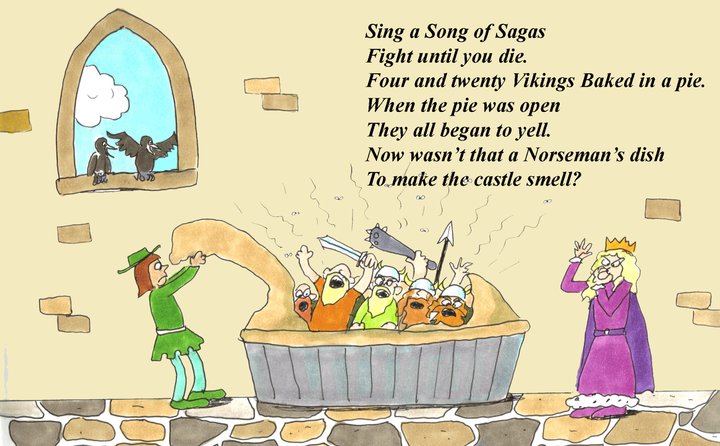Can you remember this childhood song - Wheels on the bus? It will stick in your head now - Oceancirculating there for at least a short time. I think of it often - not because I have particularly fond memories of operating the bus to school, although they are not negative memories either - but because this song is amongst the best ways to think in regards to the nitrogen cycle. Yes, nitrogen.

While life as we know it cannot survive with no nitrogen, too much nitrogen can cause deadly consequences in the boat environment. In the next several essays we intend to explore how nitrogen has transformed our coastal oceans. But first we have to learn about nitrogen and how it cycles in the world.
Simultaneously, in 1772, the Scottish physician Daniel Rutherford as well as a Swedish chemist Carl Wilhelm Scheele, noted that air contained two primary but distinctive "fluids". The first was oxygen and the second was di-nitrogen, or N2 gasoline. The scientists learned that organisms (in this case a mouse) as well as fire were extinguished in the presence of N2 therefore, in time, it earned the name "azote", from the Traditional for “without life”.
Of study course, this is a bit ironic just as truth Peas in pods. nitrogen can be a fundamental element necessary for most life. It is a critical component of proteins and of DNA as well as RNA - the blueprints of which help define the shapes your bodies, the colours of our eyes and no matter whether our ears attach to your heads. In fact, your body is approximately 3% nitrogen by bodyweight (the rest is predominantly consists of carbon, oxygen, and hydrogen).
Nitrogen come in a variety of forms including the lifeless gas in addition to in dissolved and particulate stages. Scientists separate nitrogen into a couple of categories: 1. un-reactive nitrogen or perhaps N2 gas; and 2. reactive nitrogen (sometimes known as Nr), which includes ammonia (NH3), ammonium (NH4+), nitrate (NO3-), urea along with proteins. All of these forms allow nitrogen to cycle continuously through every section of the biosphere, just like the wheels about the bus. And once nitrogen becomes reactive it passes ceaselessly from form to another, over and once again, round and round.
The largest pool of nitrogen on the planet, and the one that Rutherford and also Scheele first discovered, is present in the atmosphere. Nitrogen fertilizer given to cropsIn fact, N2 gas makes up about approximately 78% of the air flow we breathe. But this vast pool of N2 swirling and whirling around us is unusable to most organisms on Earth, apart via nitrogen fixers. Nitrogen fixers are bacteria while using the unique ability to take inert N2 gas out of the atmosphere, break apart the 2 triple bonded nitrogen atoms, and turn them in a new form of nitrogen : ammonia (NH3). You are already familiar with these bacteria should you have munched on a peanut or sneaked a mouthful of peas from the summer-ripened vine. All of these plants are generally known as legumes and they have nitrogen-fixing bacteria living on their roots in bumps or nodules. These bacteria help to naturally replenish soil nitrogen adopted by plants when they increase. In fact, since ancient times farmers have planted legumes as a way of "reinvigorating" the soil immediately after growing a crop of plants without this nitrogen-fixing ability -- say wheat or maize (corn). Legumes can also be protein rich and thus they may be important components of our eating plan.
So why does it matter that many nitrogen on Wheels on the bus is the inert gas? It matters because nitrogen can be a key ingredient in building and maintaining all kinds of life. This is particularly important when it comes to growing plants - both on land and in the sea. Nitrogen is the "limiting" nutritional in these ecosystems. That will be, it is often found in least supply in comparison to the amount required to form lifetime, so whether we are referring to the grass in your backyard or phytoplankton from the ocean (the microscopic grass with the sea), plant The Nitrogen Cyclegrowth is ultimately restricted because of the supply of nitrogen. Until just on the hundred years ago nitrogen-fixing bacteria were the one organisms that could tap into the vast, un-reactive pool of N2 gas in the atmosphere. Thus plants and ultimately human population were capped by how much reactive nitrogen naturally available on earth. In the past if we wished to grow more crops to feed more people there were to harvest fertilizer from various other locations. For example, we have applied cow and pig manure to our farm fields, we have harvested seaweed for our vegetable gardens, and we have traveled throughout the world to mine guano (or chook waste) deposits. We've even used your own sewage.
But none of these routines were actually adding reactive nitrogen on the earth. Instead, we were just, and perhaps wisely, recycling by now available nitrogen. For many years scientists attempted to mimic the capabilities associated with nitrogen-fixing bacteria so we can add nitrogen to the soil and increase our chance to grow food. While many attempts were made and various pieces of the puzzle discovered, it wasn't until the early 1900s that we learned to correct nitrogen in what we today call the Haber-Bosch process. The Haber-Bosch process uses high temperature and pressure to make ammonia and is accepted as the most "important technical invention with the twentieth century" (Smil 2001). Actually, over 48% of the 7 billion people alive today are living because of a chemical engineering feat of the actual Haber-Bosch process (Erisman et ing. 2008).

Because My aim is that can help can be altered through various chemical and microbial processes from form to another it constantly flows through the environment. You can think of nitrogen as a shape-shifter as it can be taken up by biology, secreted as a waste, and taken up again. It can be transformed at a gas to a particulate type bound up in cell and then it can be dissolved in water and make its strategy to the sea. Between cultivating nitrogen-fixing plant life, burning fossil fuels, and fixing nitrogen in this Haber-Bosch process humans have doubled the number of nitrogen cycling through the biosphere! While this additional nitrogen continues to be beneficial to many it has also caused unanticipated and negative outcomes to terrestrial and aquatic ecosystems as well as human health.
In marine systems nitrogen encourages plant growth - both microscopic phytoplankton together with larger macro algae. At first, increased growth of Phytoplanktonphytoplankton may be beneficial as they are the base of food chains and in the end support the growth of seafood. But as nitrogen additions increase too many phytoplankton and macro algae grow. First, as they grow within the surface waters, this increased phytoplankton or macro algae progress may block light from reaching the underside thus killing submerged aquatic plant life (or SAVs). SAVs are important nursery habitats for important cid and shellfish. In addition, increased nitrogen loading can transform the species composition of phytoplankton in addition to harmful algal blooms, like red tide, which are associated together with excess nitrogen loading. When the phytoplankton die they sink on the bottom and the natural decomposition by bacteria will use up the oxygen in the water column thus creating hypoxic (little oxygen) in addition to anoxic (no oxygen) conditions. Pertaining to organisms that cannot move absent - like shellfish - these kind of low oxygen conditions can wipe out them. Thus too much nitrogen results in excess phytoplankton growth, low air conditions, habitat destruction, and a loss of biodiversity.
In Part II of this series we'll target low oxygen conditions in marine environments - generally known as Dead Zones.
Tags
- About
- Accidents
- accounting
- accounting basics
- Advantages
- Animal
- Balls
- Basics
- Bathing
- Before
- Breeds
- Caring
- cats
- Choosing
- CoExist
- Dangerous
- Diabetic
- Domestic
- Dream
- Every
- Exotic
- Fascinating
- Ferrets
- Fight
- Friendly
- Fuzzy
- Getting
- Gliders
- Group
- Guinea
- Hamsters
- Helpful
- Hermit
- Ideas
- Importance
- Indoors
- Insect
- Issues
- Litter
- Lizards
- means
- Microchip
- Months
- Novel
- Outdoors
- Parrot
- Peacefully
- pets
- photoshop tutorials
- photoshop web design tutorials
- Playful
- Preserving
- Programing
- Protected
- protecting
- Rabbit
- Reptilian
- Rescue
- Right
- Skunks
- Snake
- Snakes
- Stick
- Sugar
- Suggestions
- Teaching
- Tigers
- tips and tricks
- Tortoise
- Training
- Treat
- Treats
- Turtle
- Understanding
- Vaccinations
- Weather
Thứ Ba, 18 tháng 8, 2015
Best Wheels on the bus song on youtube for your kids sings togeter
Người đăng:
Unknown
vào lúc
12:23
Đăng ký:
Đăng Nhận xét (Atom)

0 nhận xét:
¿Te animas a decir algo?